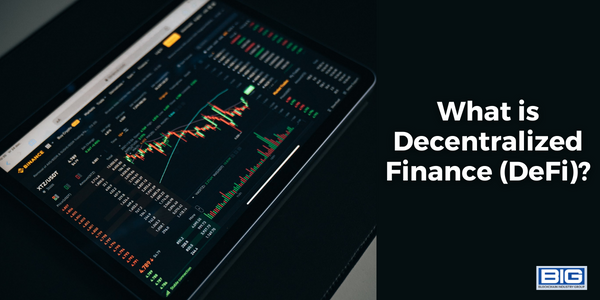
Decentralized finance (DeFi) refers to a new movement in the world of finance that seeks to use blockchain technology and smart contracts to create financial services and products that are open, transparent, and accessible to everyone. DeFi is made possible by decentralized applications (dApps), which are applications that run on a decentralized network, such as a blockchain.
In the traditional financial system, financial services are typically provided by central authorities, such as banks and other financial institutions. In contrast, DeFi seeks to create a financial system that is decentralized, meaning that it is not controlled by any single authority or entity. Instead, DeFi relies on a network of computers and other devices to validate transactions and facilitate financial services.
One of the key benefits of DeFi is that it allows users to take control of their own financial lives, without having to rely on traditional financial institutions. This means that individuals can borrow, lend, and invest without going through a bank or other financial intermediary. DeFi also offers the potential for more transparency, as transactions are recorded on a public ledger and can be viewed by anyone.
Another benefit of DeFi is that it has the potential to increase accessibility to financial services. In many parts of the world, access to traditional financial services is limited, either due to lack of infrastructure or due to regulatory barriers. DeFi can help to overcome these barriers by allowing users to access financial services directly, without the need for intermediaries.
DeFi also offers the potential for more innovation in the financial sector. Because DeFi is not tied to any particular location or jurisdiction, it is easier for new and innovative products and services to emerge. This can be especially useful for those who are looking for alternative ways to invest or manage their finances.
One popular DeFi platform is MakerDAO, which allows users to take out loans using their digital assets as collateral. This can be a useful option for individuals who may not have access to traditional forms of credit, or who want to avoid the high fees and requirements associated with traditional lending.
Another example of DeFi is the use of stablecoins, which are digital assets that are pegged to the value of a real-world asset, such as the US dollar. Stablecoins allow users to store and transfer value without having to worry about the volatility of traditional cryptocurrencies.
Top 10 Hidden Gem Blockchain Bloggers
—
Top 10 Hidden Gem Blockchain News Sites
—
Top 10 Schools with Hidden Gem Blockchain Programs
One of the most exciting developments in DeFi is the emergence of decentralized exchanges, or DEXs. These exchanges allow users to buy and sell digital assets directly, without the need for a central authority or third party. This not only gives users more control over their assets, but also helps to reduce the risk of fraud or hacking.
Overall, decentralized finance represents a revolutionary approach to financial services, offering new opportunities for individuals and businesses to access and participate in the global financial system. As the DeFi space continues to grow and evolve, it will be interesting to see how it impacts traditional financial institutions and the financial landscape as a whole.



